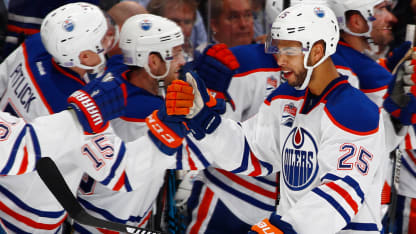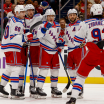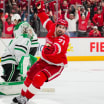Through their first eight games, the Oilers scored on 29 of their 229 shots, a .127 shooting percentage that ranked second in the NHL. In their past two games, they scored on two of their 83 shots (.024), dropping them to 9.9 percent for the season.
As for Edmonton's opponents: They scored on 17 of their 260 shots through the first eight games, a .065 shooting percentage. In Edmonton's past two games, the Ottawa Senators and Toronto Maple Leafs combined for five goals on 53 shots (9.4 percent). That raised the opposition's shooting percentage against Edmonton to 7.0 percent through its first 10 games.
In terms of shooting percentage, the Oilers initially had an advantage of 6.2 percent through their first eight games. Two games later, that gap has narrowed to 2.9 percent.
Teams sometimes can get an edge in shooting percentage during a short stretch of games; however, over the long run, parity will prevail and the percentages will even out. Last season, no team completed its 82-game schedule with an advantage as high as 2.0 percent.
Putting the entire picture together, the Oilers' hot start has been a combination of several factors, including a favorable schedule, great shooting, spectacular goaltending and psychological factors that can't be captured statistically. As a general rule, these situations rarely last for the long term.


















